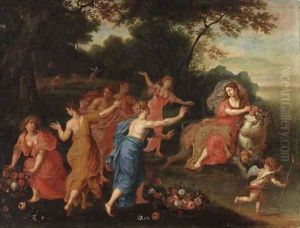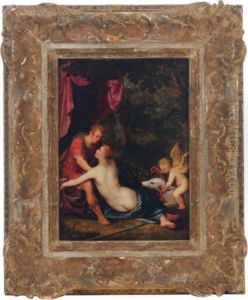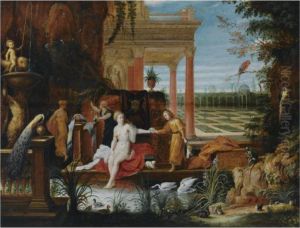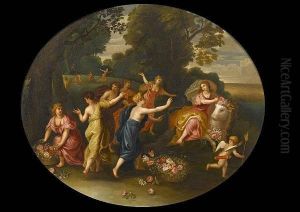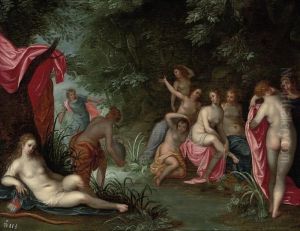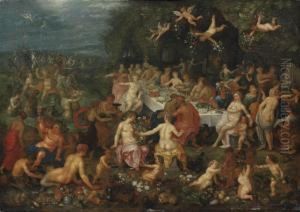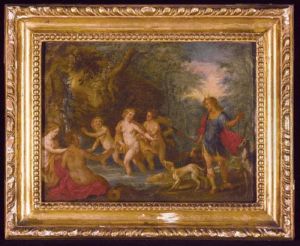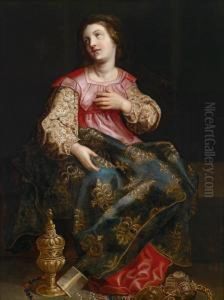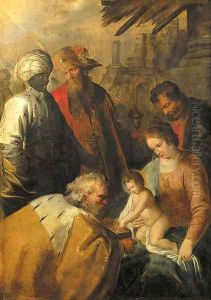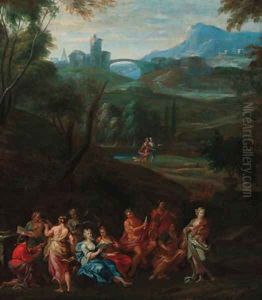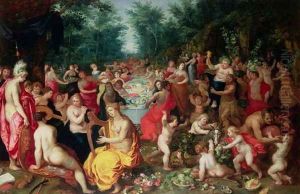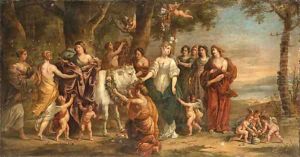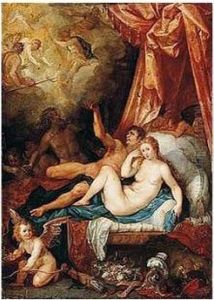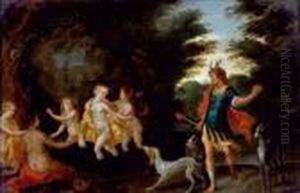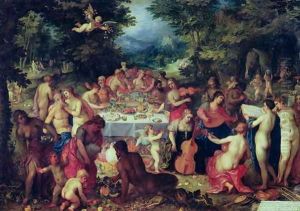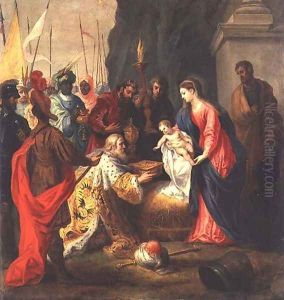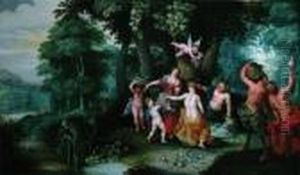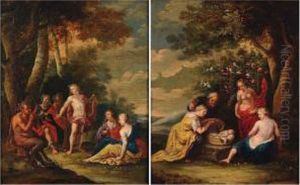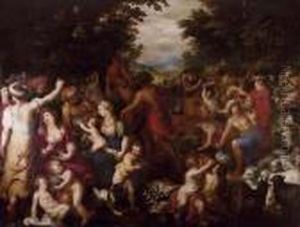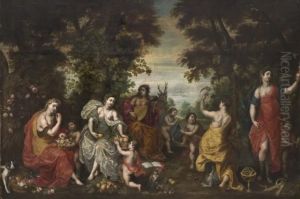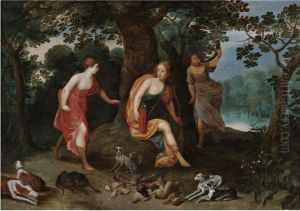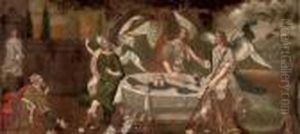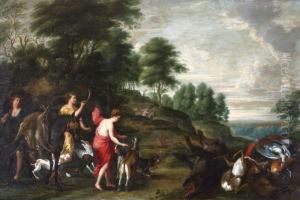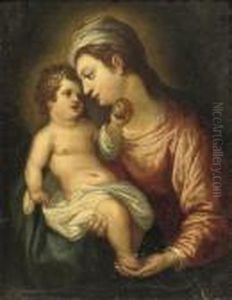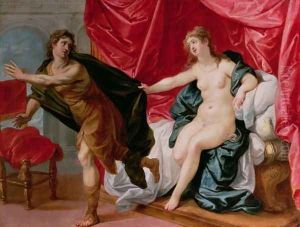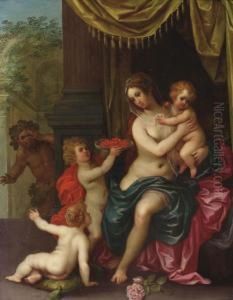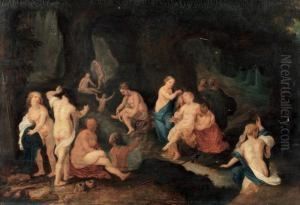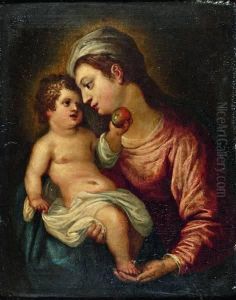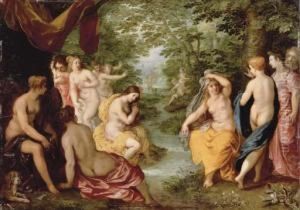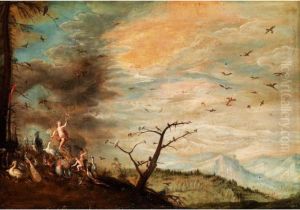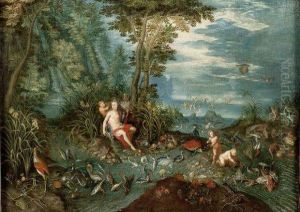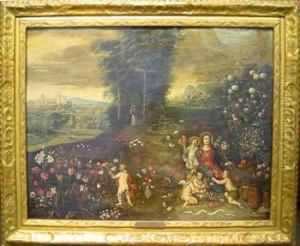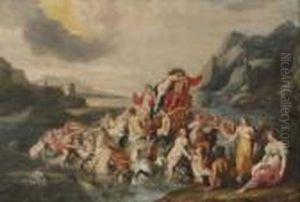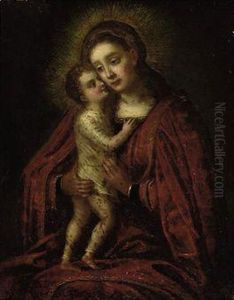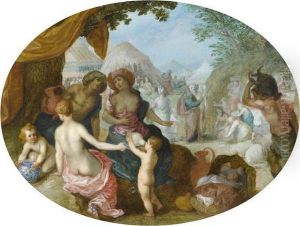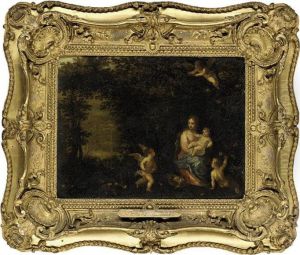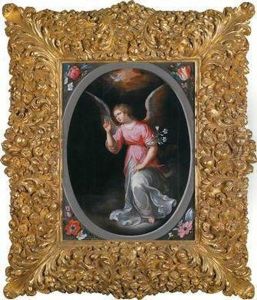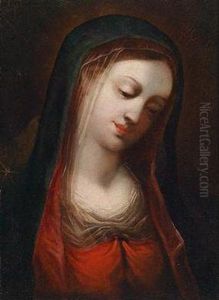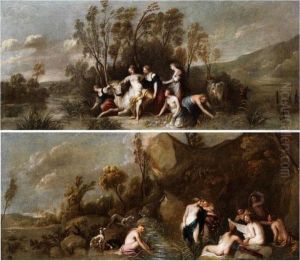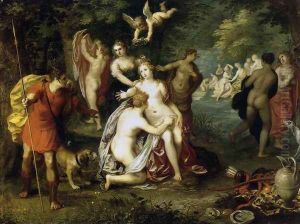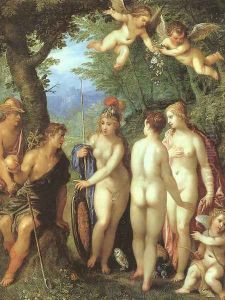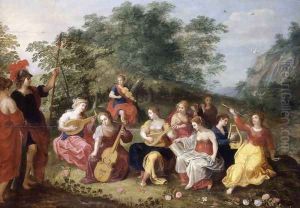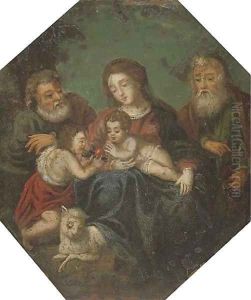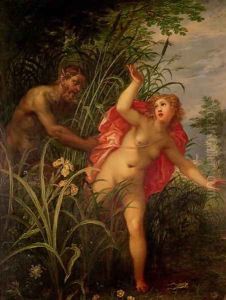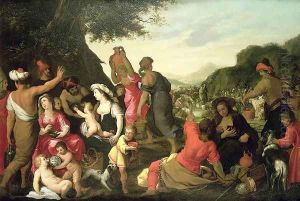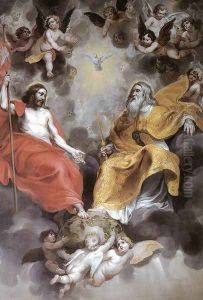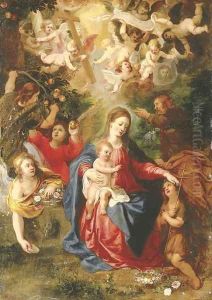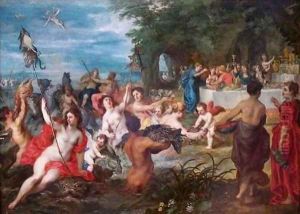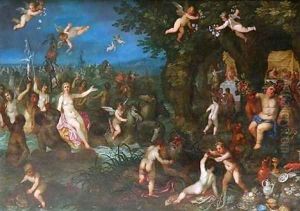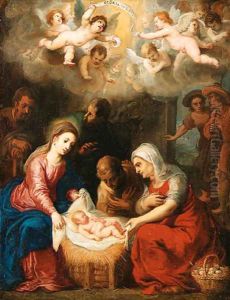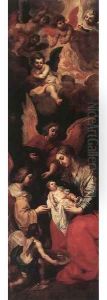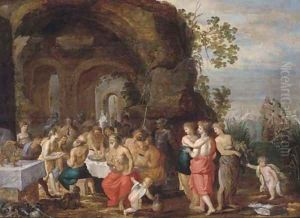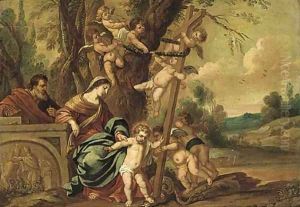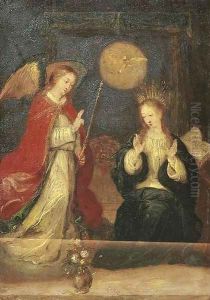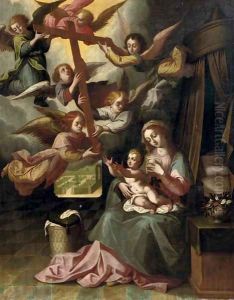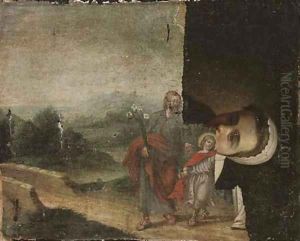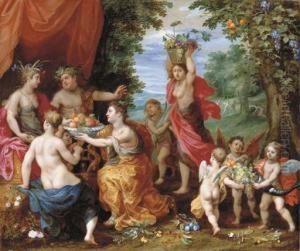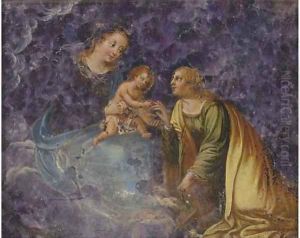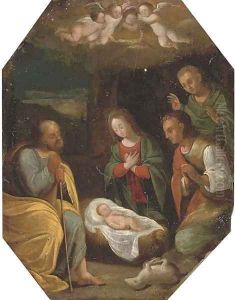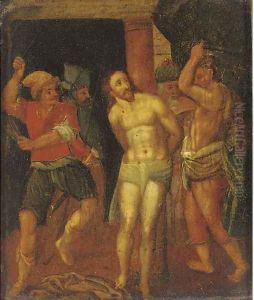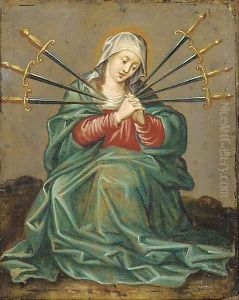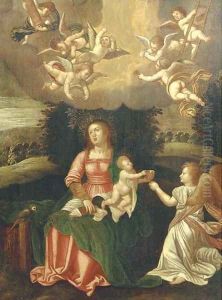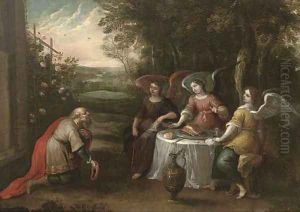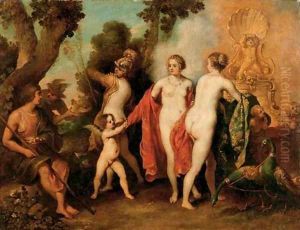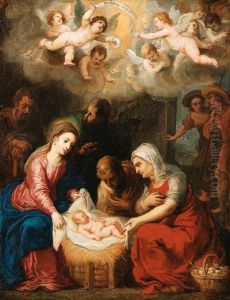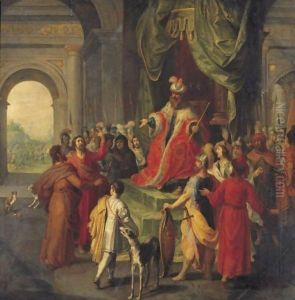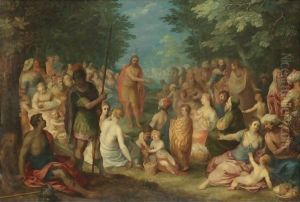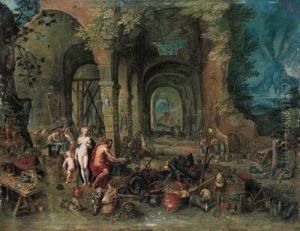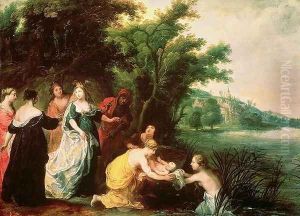Hendrik van Balen Paintings
Hendrik van Balen was a prominent Flemish painter born in 1575 in Antwerp, Belgium. As a key figure in the Flemish Baroque tradition, van Balen specialized in mythological and religious subjects, as well as genre scenes. He was known for his small-scale cabinet paintings, a format favored by collectors of the time. His style is characterized by its refined elegance and the use of vibrant colors, which he applied with a delicate touch. Van Balen was not only a skilled painter but also a master in the art of collaboration, often working with other notable artists of his era, such as Peter Paul Rubens and Jan Brueghel the Elder, to create works that combined their respective strengths in figure painting, landscape, and still life.
Van Balen received his artistic training in the workshop of Adam van Noort, who was also the teacher of Peter Paul Rubens. This connection would prove influential in van Balen's career, as the two artists later collaborated on several projects. Despite the prominence of larger works of art during the Baroque period, van Balen's mastery in smaller, finely detailed pieces set him apart and earned him a reputation among the elite art collectors of Europe.
He became a master in the Antwerp Guild of Saint Luke in 1592 and later served as its dean, which underscored his importance in the local art community. His workshop was highly productive and nurtured the talents of many young artists, including his son, Jan van Balen, who also became a noted painter.
Van Balen's works often depict scenes from classical mythology and the Bible, imbued with a sense of grace and serenity. His compositions are notable for their intricate detail and the harmonious integration of figures into lush, idyllic landscapes. Despite his success, much of van Balen's life remains poorly documented, and many of his works were attributed to his collaborators or pupils due to their joint nature.
Hendrik van Balen passed away in 1632 in Antwerp. His legacy includes not only his contributions to the Flemish Baroque movement but also his influence on subsequent generations of artists. Today, his works are preserved in major museums around the world, where they continue to be studied and admired for their beauty and historical significance.
